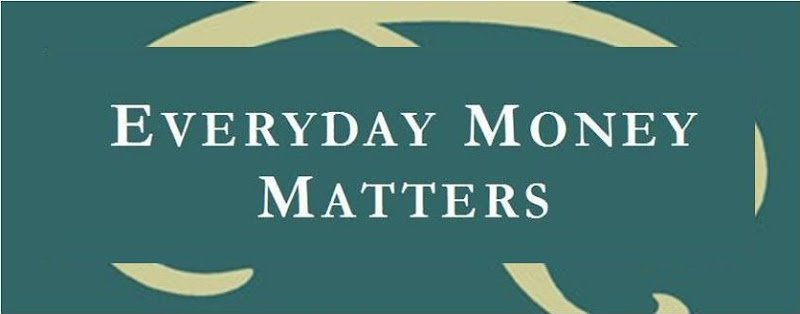by Laura Rowley
Originally posted on Sunday, October 31, 2010, 12:00AM
Like many Americans, Leah West, 40, is struggling to shed debt and manage an array of financial obligations. After her divorce seven years ago, Leah, a mother of three, enrolled in college and earned her bachelor's and master's degrees. She moved up the ladder in health care administration, and earns about $80,000. But she's now saddled with more than $82,000 in debt, mostly student loans; and her home is worth less than what she paid it. Leah also wants to set aside money for college tuition for her kids, and build a retirement fund.
Since September, I've been coaching Leah in her quest to improve her finances, a journey she blogs about at WomansDay.com. Her story offers practical lessons in how to attack multiple financial goals and maintain momentum. Here are just a few:
1) Focus on the positive
Before you confront a mountain of bills, remind yourself what's working for you. Leah had earned a master's degree — an accomplishment just 6 percent of Americans can claim. She enjoys her job, has a solid income and excellent insurance coverage. She is in good health, has three wonderful kids, and can cover all her bills without falling further into the red. Relationships, education, career experience, health and spirituality are all components of well-being; savoring the positive can provide the momentum to tackle the bad stuff.
2) Set one to three manageable goals
Don't overwhelm yourself with a list of ten things to fix immediately. Leah's priorities were eliminating her credit card debt; creating a plan to pay off her student loans (which were in forbearance); and building up an emergency fund of $10,000. Once we had a strategy up and running, we could move on to other goals, such as college savings and retirement.
3) Get a handle on the real numbers
Although Leah was making double the minimum payment on her credit cards, she felt she wasn't making progress. I used an online debt calculator to show her the truth: By paying twice the minimum, she would banish the debt in 15 months and pay $302 in interest. If she made only the minimum payments, it would take more than six years, and she'd pay $1,328 in interest. Use tools like this one to help you get a grip on the math.
Leah also got the hard numbers on her student loan debt to make sure the loans weren't snowballing at absurdly high interest rates, and disrupting the rest of her financial plan. Fortunately, the rates were quite low, so we left that alone for the moment to focus on the debt paydown. (That would free up the cash necessary to eventually tackle the student debt.)
Finally, we discussed Leah's retirement plan. She had enrolled in a 403(b) plan when she started her job at a health center and contributed steadily for four years. But about 18 months ago, her employer eliminated matching funds because of budget cuts, so Leah stopped contributing. The health center is expected to reinstate the match next year, and Leah plans to jump back in then. It's a smart move from a numbers perspective: It's better to pay down credit card debt at 20 percent interest than to contribute to a plan with no match, because she's unlikely to earn a 20 percent return on her retirement savings.
4) Rank your rates, then cut them down
Leah listed her credit cards on a single page from highest to lowest interest rate, along with the amount due and the company contact information. She called each lender and asked for a rate reduction, using this script: "I have been a cardholder since ____. In the past few months, several credit card companies have offered me lower rates than my current rate with you. I value our relationship, but would like you to match the other offers that I have received and reduce my interest rate by 10 percent. Are you authorized to adjust my interest rate?" (If they say no, ask politely to speak to someone who can and repeat the request.)
Although it took several hours of phone hassles, Leah cut her interest rate by 13.5 percentage points across three cards. Savings: About $275.
5) Snowball it down
When we started, Leah had four months left on her car payment. Once that debt is paid off, she'll direct the money to the highest-interest credit card. Similarly, when that's paid off, the money will be targeted (with her car payment) to the next credit card until they're all completely paid off. Then that giant snowball of cash will be used to pay off her student loans. The key is to keep the money out of her daily budget, so she doesn't use it to boost her lifestyle.
6) Track spending to the penny
Leah began looking for ways to reduce her monthly expenses, and thinking about her choices in a value-oriented way. For instance, she could move from her home on Cape Cod to a cheaper suburb of Boston, but she values living on the beach. On the other hand, Leah realized she was dropping about $400 a month at a corner convenience store, on non-essentials like deli sandwiches and homemade ice cream. She's eliminated those indulgences, dropped a gym membership she barely used and found ways to save on her cable and auto insurance. The idea is to cut where she can so she can spend on what she values most. The only way to do that is to know where every penny goes.
7) Look at ways to increase your cash flow
Leah usually gets a tax refund in April of more than $1,000. She spoke with an accountant about changing her withholding at work to get more cash in each paycheck (and no refund in April, because that's giving Uncle Sam an interest-free loan for a year). The accountant ultimately advised against it for now, but she'll revisit the idea next year. More importantly, she increased her income by working freelance on her blog. Those extra paychecks are earmarked to pay off her debt and build an emergency fund of $10,000.
8) Keep a gratitude journal to stay motivated
Leah started a journal right after her divorce, when she was overwhelmed and frightened about the future. She returned to it recently when she hit a financial setback — her partner of more than two years moved out, and took all of the living room furniture with him. (She bought a few basic pieces so the kids wouldn't have to sit on the floor.) The journal reminded Leah of how far she's come, and helped her find the energy and patience to keep moving forward.
Tuesday, April 12, 2011
Subscribe to:
Post Comments (Atom)






No comments:
Post a Comment